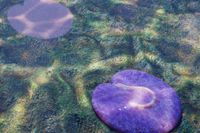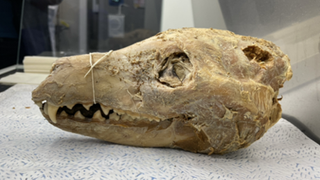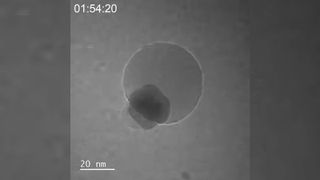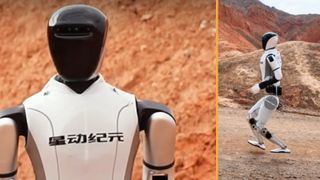
Half-a-billion-year-old 'marine Roomba' is earliest known asymmetrical animal
A backward question mark shape on the creature's back reveals early animal evolutionary history.

By Samantha Mathewson published
"Some of these features are surprisingly dark compared with their icy surroundings, earning their nickname of 'cryptic terrain.'"

By Harry Baker published
A probabilistic new map of the universe surrounding the Milky Way reveals that our galaxy is likely part of an even larger "basin of attraction" than we previously assumed.

By Clarissa Brincat published
Dairy products can affect the way certain medications work. But why?

By Lydia Smith published
This little lizard can fire blood up to 5 feet from its face, has spiky horns and inflates itself to choke predators.

By Elise Poore published
Mesmerizing footage from a new PBS Nature show captures the bioluminescent beauty of brilliant blue waves crashing along San Diego's coast.

By Sascha Pare published
Researchers working with Colossal Biosciences have assembled a near-complete Tasmanian tiger genome and developed artificial reproductive technologies that could help de-extinct the species.

By Patrick Pester published
People all over the world believe they've seen or heard a ghost, but there's no scientific evidence for spirits, hauntings or the paranormal. So what's behind these "encounters"?

By Paul Sutter published
New theoretical research suggests primordial black holes could one day help researchers locate invisible dark matter.

By Alexander McNamara published
Can you name everything from Ac to Zr? Test your knowledge of the periodic table and see if you can top the leaderboard

By Harry Baker published
A new study captured never-before-seen footage of hydrogen and oxygen atoms combining to form a miniature water droplet out of "thin air." The newly improved reaction could one day help astronauts make water in space.

By Skyler Ware published
This new device can AI to distinguish between different coffee blends or detect when food or drink may be on the verge of going bad.

By Keumars Afifi-Sabet published
The STAR1 robot can reach a top speed of 8 mph with the added help of a pair of sneakers.

By Keumars Afifi-Sabet published
Scientists combined two existing wireless technologies — high-speed electronics and millimeter wave photonics — for the first time to achieve record-breaking wireless data transmission speeds.